The hidden return of Iran’s morality police

On paper, Iran’s law still mandates the compulsory hijab. But the streets tell a more complicated truth.
Host of nightly show The Program

On paper, Iran’s law still mandates the compulsory hijab. But the streets tell a more complicated truth.
In Tehran, many women now walk unveiled. At airport checkpoints, they pass bareheaded—and officers look away. Yet that fragile tolerance evaporates beyond the capital.
In Isfahan, women receive automated text messages accusing them of “improper veiling,” detected by license-plate cameras. In Qom and Mashhad, inspectors visit offices to “remind” employees of the rules.
Inside the state, there is no agreement on how to confront defiance.
President Masoud Pezeshkian concedes that “coercion doesn’t work.” Parliament hard-liners demand new crackdowns. Friday-prayer leaders thunder about moral decay. The country’s morality directorate boasts of “eighty thousand trained field operatives.”
The people, however, have made their choice.
Across Iran’s cities, millions of women walk unveiled—not in protest marches, but in daily, deliberate normalcy. Their quiet defiance has become an act of collective civil resistance, echoing Rosa Parks’s refusal to give up her seat in Montgomery: simple, silent and transformative.
In doing so, Iranian women have written a new, unwritten law.
From street vans to soft surveillance
The morality police of the 2000s were visible, violent and crude. The new version is quieter but no less insidious.
The loud green vans are gone, as are the street scuffles and viral videos of women being dragged away. In their place stands a bureaucratic apparatus: text warnings, sealed storefronts, administrative summonses and digital dossiers.
Three years after the death of Mahsa Amini, the state has returned to where it began—only this time, it wears a digital mask. The danger is deeper because it is diffuse.
But society has moved on. The question is no longer just about the veil; it is about the freedom to choose one’s own life.
The morality police are no longer merely an institution; they are a symbol of a larger confrontation—the logic of control versus the logic of choice.
One seeks to recreate a past that no longer exists. The other insists on claiming a future that has already begun.
In that struggle, victory will not belong to those with the greater machinery of repression, but to those who still possess the will to live free.
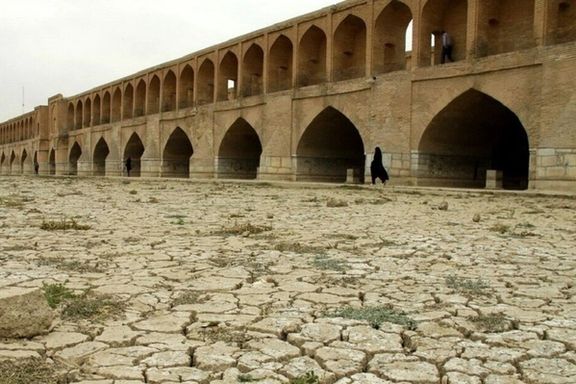
Iran’s city of Isfahan could face a drinking water emergency within 45 days unless immediate action is taken to halt non-potable water extraction and speed up long-delayed transfer projects, the city’s council head warned, as drought deepens a nationwide water crisis.
Mohammad Noursalehi, head of Isfahan’s City Council, told the Iranian Labor News Agency (ILNA) that the Zayandehrud Dam -- the main source of water for central Iran -- is reaching critically low levels.
“If the current trend continues, even drinking water for citizens will be at risk within the next 45 days,” he said.
According to Noursalehi,the dam is releasing several times more water than it receives, and much of that flow never reaches Isfahan’s main treatment plant because a large portion is diverted or lost along the route through both legal and illegal withdrawals.
Five million people at risk
He warned that more than five million people in Isfahan, Yazd, Chaharmahal and Bakhtiari, and Qom provinces depend on the Zayandehrud for drinking, agricultural, and industrial water.
“This is no longer just an agricultural or industrial problem. People’s drinking water is in danger,” he said, calling for the immediate suspension of non-drinking water use.
Noursalehi urged the government to accelerate long-stalled water transfer projects such as the Kouhrang-3 tunnel and the southern Isfahan pipeline, saying that decades of delay had compounded the crisis.
“If these projects had been completed on time, we would not be facing this situation today,” he said.
The council head also warned of severe environmental consequences, noting that the complete drying of the Gavkhouni Wetland -- once a UNESCO-listed ecosystem -- threatens the region’s biodiversity.

Land subsidence is already visible across Isfahan’s plains, Noursalehi said, warning that groundwater depletion has caused the ground to sink in several northern districts, prompting the evacuation of some schools.
“If this continues, Isfahan’s centuries-old monuments could face serious structural threats,” he said.
Officials in Iran have recently acknowledged that 19 major dams across the country are below 20 percent of capacity, with some hydropower plants -- including Tehran’s Amir Kabir Dam -- forced to halt operations.
Environmental researchers say the country is nearing “water bankruptcy,” driven by decades of overuse, unscientific dam-building, and poor water management.
Autumn remains dry, reservoirs at record lows
The first month of autumn passed with almost no rainfall across most provinces, according to the national meteorological organization. Officials said precipitation this year has dropped up to 45% below seasonal averages, leaving many regions facing possible rationing of drinking water.
Ahad Vazifeh, head of the National Center for Climate and Drought Crisis Management, said on Thursday that “no significant rain is forecast for at least the next three weeks,” warning that water shortages in major cities, including Tehran and Isfahan, will persist.
“Even if winter brings above-average rain, it will not compensate for the current deficit,” he said.
Government data show that total water stored in Iran’s 193 main dams has fallen to 17.6 billion cubic meters -- just 34% of full capacity and down nearly a quarter from last year.
Inflows since the start of the new water year have dropped 39%, while the outflow from reservoirs has declined by 29%.
The Zayandehrud dam in Isfahan is now only 13% full, the Lar dam near Tehran 2%, and the Independence dam in Hormozgan 6%, according to the Energy Ministry.
Many southern and central reservoirs have reached “dead storage” levels, rendering water unusable for supply or power generation.
Experts say Iran’s worsening drought, coupled with climate change and policy missteps, is transforming water shortages into a potential national security concern. Hundreds of villages now rely on water deliveries by tanker, while protests over shortages have erupted periodically in several provinces.
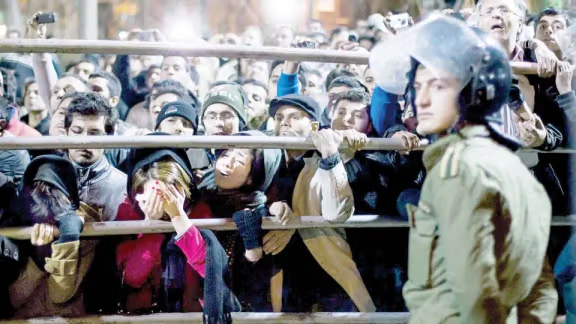
Iran has carried out at least 88 public executions between 2011 and 2023, according to a review published by the daily Shargh, which said the practice -- often witnessed by crowds including children -- has failed to reduce violent crime despite declining in recent years.
Shargh described familiar scenes at public hangings: spectators arriving hours early, jostling for a view, with teenagers and children in tow as a crane and rope are readied.
The report cited legal experts and psychologists as saying that public hangings, though permitted under certain judicial conditions, risk normalizing violence and inflicting long-term psychological harm, particularly on young observers.
The practice declined to zero in 2021 before returning from 2022, with Fars, Khorasan and Kermanshah provinces accounting for the largest share, and smaller numbers in cities including Yasuj, Arak, Ahvaz, Marvdasht and Isfahan, the newspaper reported.
Many events occurred in provincial centers with large populations or cases that drew unusual media attention, the newspaper added.
“Public executions can have broad negative effects on society. They are not deterrents and instead strengthen violent behavior while harming the mental health of children and adolescents,” lawyer Abdolsamad Khorramshahi told the daily.
Under Iran’s judicial principles, executions should ordinarily be conducted out of public view, Khorramshahi noted.
“Article 4 of the Islamic Penal Code allows a public execution only in specific circumstances, when the executing prosecutor proposes it and the prosecutor general approves.”
Repeated exposure to violence in public desensitizes society and fosters imitation, social psychiatrist Amirhossein Jalali Nadoushan told Shargh.
“When violence becomes a spectacle, it seeps into families and daily life,” Jalali said. Public executions can stir what he called “collective anger” -- repressed frustration that surfaces when citizens lack lawful ways to express grievances.
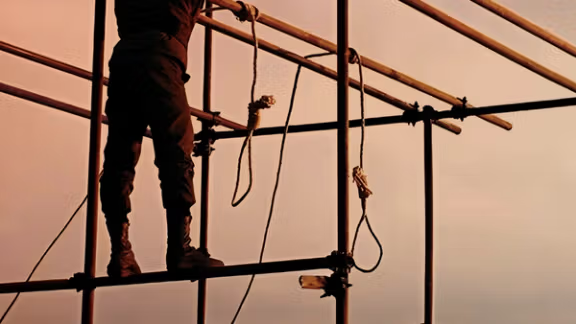
Deterrence needs equity, not spectacle
Severe penalties have not curbed crime despite heavy sentences for drug traffickers, murderers and thieves, jurist and former Central Bar Association chief Ali Najafi Tavana told the daily.
“No country has managed to control delinquency through executions or corporal punishment.”
Punishment, according to him, only works within a framework grounded in meeting basic needs -- work, housing, social security and psychological calm -- and in visible fairness. When poverty, corruption and discrimination persist and elites flaunt privilege, fear of punishment erodes, he added.
Shargh also cited two public executions in July and August -- one in Larestan and one in Golestan -- where onlookers applauded and whistled at the conclusion, stressing the paper’s finding that the display does not reduce violent crime.
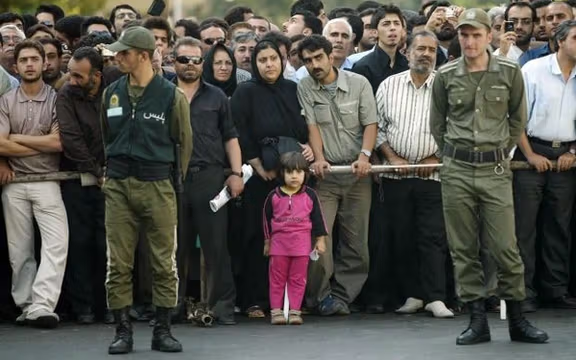
Iran’s execution rate surges in 2025
Twenty-eight inmates were executed nationwide on October 22, bringing the total number of executions that month to 280, the Iran Human Rights Society wrote on Wednesday.
The group called October “the bloodiest month for prisoners since the mass executions of 1988.” The deaths, it said, mostly linked to drug offenses or murder, included several Afghan nationals and were sometimes carried out without notifying families or allowing final visits.
Amnesty International on October 16 also urged an immediate halt to executions, saying more than 1,000 had been recorded so far in 2025, many following unfair trials aimed at silencing dissent and persecuting minorities.
“UN Member States must confront the Iranian authorities’ shocking execution spree with the urgency it demands. More than 1,000 people have already been executed in Iran since the beginning of 2025 -- an average of four a day,” Amnesty said.
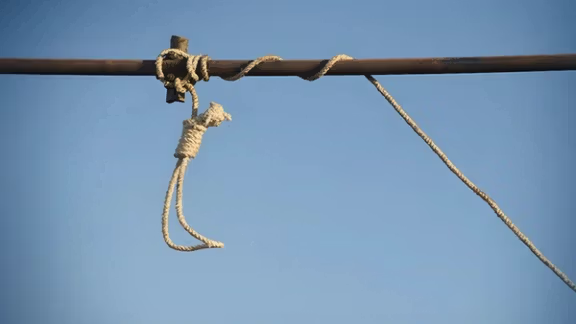
An Iranian nuclear engineer employed at the Natanz nuclear facilities was executed in Qom last week after being convicted of spying for Israel, according to the Hengaw Organization for Human Rights.
Hengaw said Javad Naeimi, a resident of Qom and a specialist working at the Natanz site, was hanged at dawn on October 18 in Qom Central Prison “under conditions of total secrecy.”
Iranian state media had earlier reported the execution of an unnamed man for espionage for Israel but did not identify him.
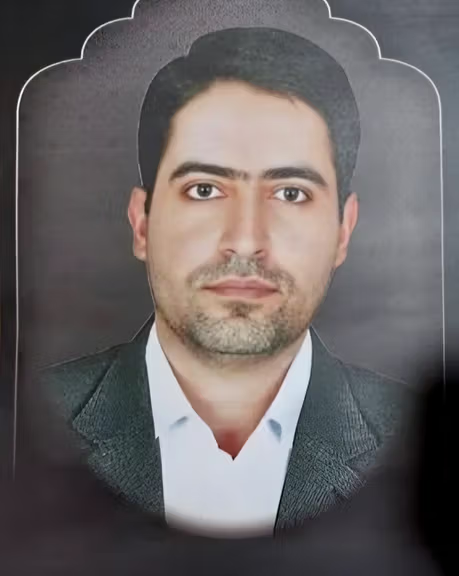
The rights group said Naeimi had been arrested by security forces in February 2024 and sentenced to death after what it described as an opaque judicial process.
It said he was subjected to torture and coerced confessions during interrogation, citing a pattern of forced admissions in Iranian espionage cases.
Iran’s judiciary has not commented publicly on the latest claims.
Earlier reports by the judiciary-linked Mizan news agency said the executed man had “admitted to communicating with Israeli intelligence for personal and professional reasons.”
Hengaw said Naeimi’s burial took place under heavy security at Qom’s Behesht-e Masoumeh cemetery on October 21, and that his family had been warned not to speak publicly about the case.
The execution comes amid an intensified crackdown on alleged Israeli-linked espionage cases following Israel’s June strikes on Iranian nuclear sites.
In August, Tehran executed another scientist, Rouzbeh Vadi, for allegedly passing classified information to Mossad, while in September and October several other men were hanged on similar charges.
Last month, the UN special rapporteur on human rights in Iran said the country had executed 11 individuals on espionage charges this year, with at least nine carried out after Israel's military strike on Iran on June 13. Saturday's execution brings the total to at least 12.
Rights groups, including Amnesty International and Iran Human Rights, have condemned the surge in executions, saying trials for alleged espionage often fail to meet international standards of due process.
Tehran maintains that it is acting within its laws to counter what it calls “organized intelligence infiltration” targeting its nuclear and defense programs.

Hooshmand Ramezanipour spoke softly from a refugee camp in Serbia, his voice low and cautious. “There are smugglers here,” he said. “To be honest, I have died and been resurrected many times — both inside Iran and here.”
The 39-year-old Iranian political activist said he was tortured and nearly killed by other migrants after being recognized for wearing a T-shirt with the Israeli flag and advocating for a pro-Israel rally while living in refugee camp in Northern Greece.
“I curse myself a thousand times a day,” he said. “I wish I hadn’t run away and died right then and there so I wouldn’t have to endure all this pain now.”
Ramezanipour said the refugees, whose nationality he withheld to guard against reprisals, shot him in the leg and held him down as they dripped molten plastic on his stomach.
A mechanic by trade, he fled Iran in 2016 after years of activism alongside reformist figures such as Mohammad Nourizad and later volunteered for a Persian-language Israeli radio outlet in Turkey.

'Admirer of Israel'
Ramezanipour spoke to Iran International from hiding, saying he still fears his attackers could find him.
His ordeal, he said, began after he fled Turkey in 2023, where members of the ultra-nationalist Grey Wolves group which opposes migration had threatened him.
Transferred to the Kavala refugee camp in northern Greece, he said he saw anti-Israel slogans scrawled on the walls and campaigns in the city supporting Hamas for several months recently.
Ramezanipour said he has long admired the arch-foe of the Iranian theocratic rulers he had fled, saying many in the region had been "brainwashed" against Israel.
The devastating Israeli ground incursion into Gaza which local medics say killed over 67,000 people after Hamas attacks on Israel killed over 1,200 Israelis and captured over 200 others has stoked sharp criticism of Israel, especially in the Muslim world.
“I decided to get an Israeli flag and enter the camp with it,” he recalled. “At first no one bothered me, but when the camp director saw me, he ordered the security guards to take it away. I refused.”
The next day, he was summoned and forced to hand it over. “The director even threatened me, saying that either I would leave the camp or he would — that there wasn’t room for both of us,” he said.
Tens of thousands of asylum seekers languish in semi-lawless camps in and around Europe hoping to achieve safety and prosperity outside their homelands.
Western immigration authorities typically favor asylum applicants who are able to demonstrate they face plausible harm for their ethnicity, religion, sexual orientation, political views or activism.
Pro-Israel rally bid in Greek refugee camp
Iran International has reviewed the paperwork Ramezanipour filed to local Greek authorities requesting official permission to hold a public rally near the refugee camp in late July. The rally never materialized.

The network has also examined medical documents confirming that he sustained second- and third-degree burns with severe infection risk and signs of torture, as well as a Serbian police report showing that misdemeanor charges against him for illegal residency were dropped due to his cooperation with authorities and the circumstances of his case.
The documents did not elaborate on the alleged attack, perpetrators or potential motives.
Iran International has additionally seen photos and videos provided by Ramezanipour showing his current condition and the poor state of the camp where he is living.
As threats against him intensified inside the camp, Ramezanipour decided to leave. He said unknown men had begun following him after his failed attempt to organize the rally.
“One night around two in the morning, a car stopped in front of me,” he recalled about the early hours of September 28. “A man claimed to be a police officer and asked for my ID. Then someone shouted, ‘Don’t let this bastard escape—catch him!’”
Fearing for his life, he fled Greece with the help of smugglers and crossed into Serbia. “I thought I was finally safe,” he said. But in the Serbian border town of Loznica, he was taken to an abandoned factory filled with other migrants.
'The same bastard'
Inside, one of the men pulled out a phone, looked at a photo, then at him. “It was the picture of me wearing the Israeli flag T-shirt,” he said. “He compared it to my face and told the others, ‘This is the same bastard.’”
“They tied my hands behind my back and stuffed a cloth into my mouth,” he said. “They melted plastic and poured it on my body. They shot me in the thigh."

Ramezanipour eventually got help from local villagers who called the police.
“The police were kind” he said.
Ramezanipour said he identified four of the fifteen men who attacked him. Police told him the suspects had fled to Bosnia, but one officer later confided that Serbian and Bosnian police “don’t have good relations,” making arrests unlikely.
Mahshid Nazemi, an advocate with the refugee network Iran House, said Ramezanipour reached out to her through refugee contacts seeking help.
“Many of them find us when they have nowhere else to turn,” she said. “His wounds are infected and he’s in constant pain. He can’t walk without help, and he lives in fear they’ll find him again," Nazemi told Iran International.
She said his story is one of many that show the dangers refugees face in Europe. “Refugees are beaten, raped and pushed back across borders,” she said. “When they drown, Turkey blames Greece and Greece blames Turkey. No one takes responsibility.”
From his camp in Serbia, Ramezanipour says he still wakes at night, reliving the pain and fearing his attackers will find him again.
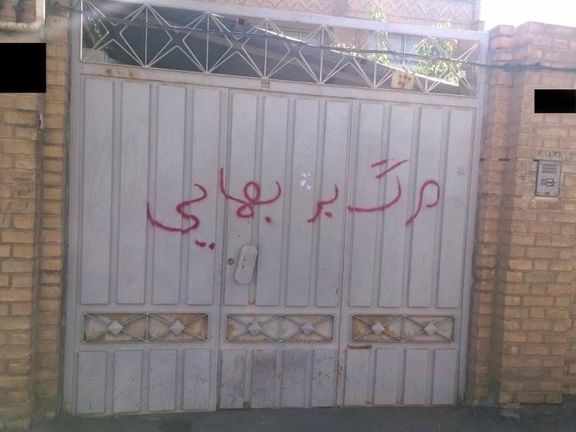
A hardline commentator on Iranian state television alleged that the Baha'i minority in Iran holds secret allegiance to Israel, in comments which appear to reinforce official enmity toward the group as state persecution continues.
“The Baha'i sect has an unbreakable bond with Zionism. Don’t be fooled by their Iranian origins,” Ali Shirazi said in a television program later shared on social media on Tuesday.
“Baha'i and Israel are one and the same, not two separate entities at all.”
The remarks came a day after the Baha’i International Community raised concerns about intensifying crackdown on members of the faith inside Iran, including what it called coordinated operations in at least six provinces.
“At least 22 Bahais had their homes and businesses subjected to invasive searches, threats, and interrogations," the group posted on X Monday. "Agents confiscated personal belongings and electronic devices, sealed workplaces, and arrested or detained individuals in unknown locations.”
'Baseless hate-mongering'
A spokesperson for the Baha'i International Community condemned the anti-Bahai commentary on Iran's state TV, saying they reflect the deep-seated hostility of Iranian authorities.
“When examining the historical backdrop of such hate-mongering, it has always taken different directions in different eras. At times, Baha'is have been labeled spies; when nationalist sentiments were strong, they were called anti-nationalist; elsewhere, anti-religious,” said Vesaq Sanaei, the community’s spokesperson in Sydney, in a phone interview with Iran International on Wednesday.
“Interestingly, the constant shifting of direction, topic, and examples shows there's no foundation beyond hate-mongering—its sole aim is to divide people. This is well-precedented, and unfortunately, it’s being pursued in various forms across multiple platforms,” Sanaei added.
Baha'i activist and filmmaker Sepehr Atefi also responded to the video on Wednesday, calling on Iranians to stand in solidarity with the Baha'i minority.
“Everything points to the Islamic Republic’s serious resolve to destroy Iran’s Baha'i community through repression, imprisonment, and economic pressure, using the same false, outdated accusations that lack any evidence,” Atefi posted on X.
“Today, more than ever, we need the solidarity of the entire Iranian society with Baha'is in Iran,” he added.
Asked whether a commentator’s speech on state television carries the same weight as that of an official, Sanaei said the platform legitimizes such messaging.
“When an official platform is given to someone who, without evidence, reason, or documentation, unleashes such volumes of lies and hate—and you see this at every level, even the highest, where ‘experts’ are invited or introduced to do the same—whether they hold office or not, it’s cause for concern,” he said.
“It justifies and normalizes oppression and suppression, erodes sensitivity to injustice and tyranny, and—worst of all—harms Iran’s social cohesion,” Sanaei added.
Not recognized
Iran does not recognize the Baha'i Faith as an official religion, and its followers have faced persecution and prosecution since 1979. Accusations linking Baha'is to Israel are often used by authorities to portray them as hostile to the state.
The Baha'i Faith’s spiritual and administrative world center is located in Haifa and Acre, Israel, which includes sacred sites such as the Shrine of the Bab.
Iranian Baha'i community has faced systematic repression, arrests, and nearly 1,500 years in combined prison sentences over the past five years, US-based rights group Human Rights Activists News Agency (HRANA) reported on August.
The Baha'i Faith emerged in 19th-century Persia, challenging Islamic orthodoxy with its teachings on universal religion and progressive revelation.
